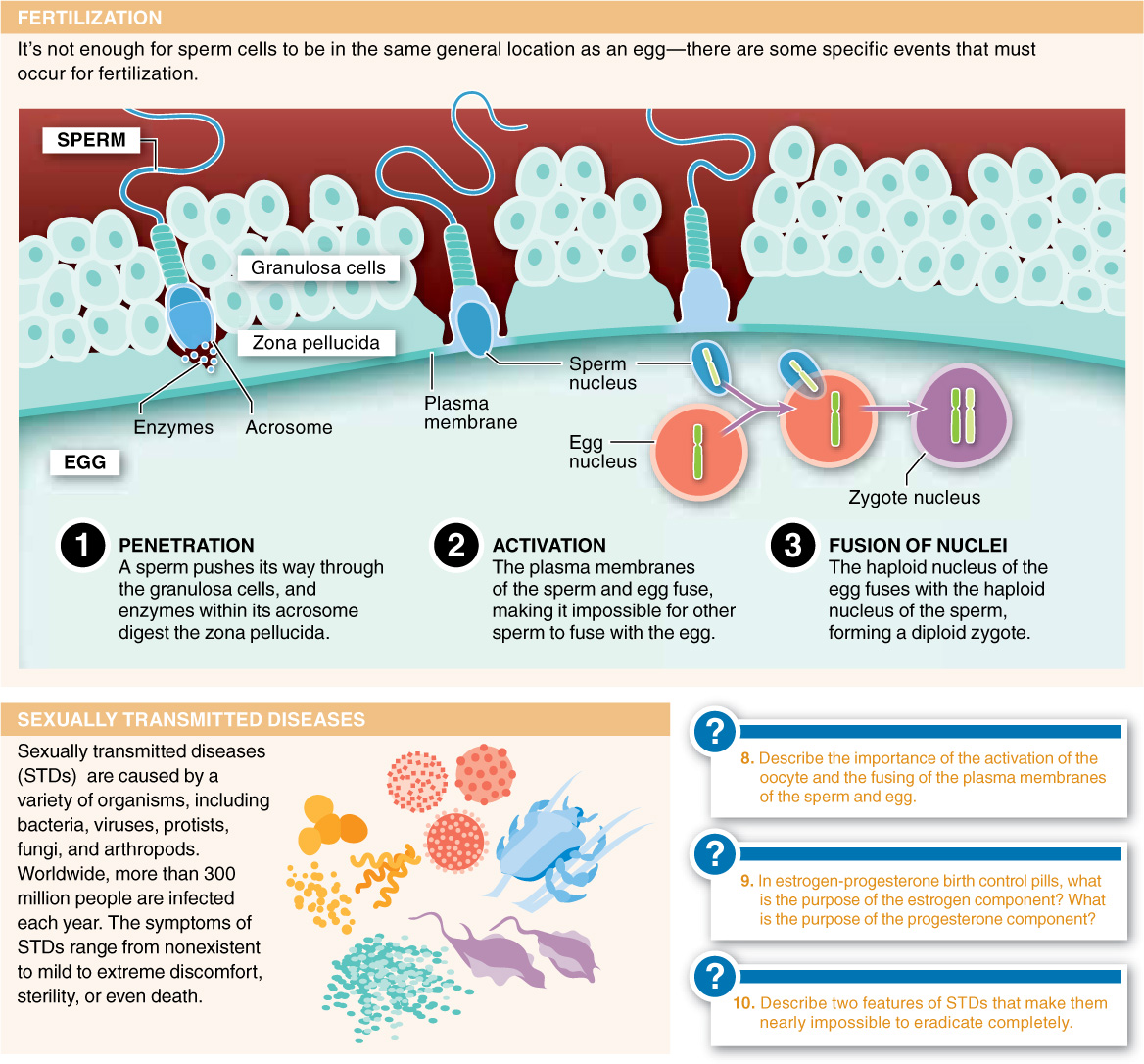25.9–25.11: Sex can lead to fertilization, but it can also spread sexually transmitted diseases.
Sex can lead to fertilization (the fusing of a sperm and egg, forming a diploid zygote) and pregnancy (which can be prevented by numerous methods), but also to the transmission of STDs.

Question 25.22
The corpus luteum:
- a) secretes chorionic gonadotropin.
- b) is reabsorbed when fertilization occurs.
- c) is the only source of the hormones that maintain pregnancy.
- d) secretes progesterone but not estrogen.
- e) is the initial sourceof progesterone during pregnancy.

Question 25.23
In mammalian fertilization, the extracellular layer of the egg that functions, in part, as a sperm receptor is called the:
- a) endoderm.
- b) jelly coat.
- c) acrosome.
- d) egg plasma membrane.
- e) zonap ellucida.

Question 25.24
The hormones present in birth control pills typically prevent pregnancy by:
- a) preventing formation of the endometrial lining of the uterus.
- b) preventing maturation of ovarian follicles.
- c) preventing sperm from fertilizing the ovulated egg.
- d) causing the endometrium to be shed once a fertilized egg has implanted.
- e) preventing implantation of fertilized eggs in the endometrium.

Question 25.25
Tying off the vas deferens leading from each test is will:
- a) prevent formation of sperm.
- b) decrease testosterone secretion.
- c) reduce secretions from the seminal vesicles.
- d) reduce secretions from the prostate gland.
- e) None of the above.
